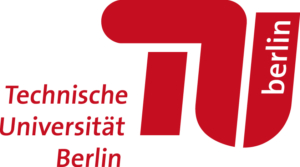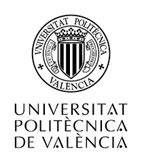Coordinating Institute
Ghent University is a top 100 university and one of the major universities in Belgium. It hosts ePIXfab through the Photonics Research Group. With its 8 professors and 80+ members this group works on a broad variety of research subjects in the field of silicon photonics. This encompasses novel device concepts, heterogeneous integration technologies and design methodologies as well as application and system oriented work in the fields of telecom, datacom, sensing and life science. The group is associated to imec and has a long track record of designing into the standard SOI-based iSiPP50G platform of imec as well as its silicon nitride based BioPIX platform. For heterogeneous integration – in particular III-V on silicon integration – the group uses well equipped clean rooms of Ghent University.
Members
AMO is a non-profit high-tech SME specialized on R&D for micro- and optoelectronic applications. We offer waferscale customized photonic device services fabricated in our clean room based on SOI substrates and silicon nitride on oxide. We have many years of proven expertise in nanofabrication for high quality nanophotonic passive and active devices.
BRIGHT Photonics provides business and research with photonic IC (PIC) expertise. In case of product development customers profit from a reduced time to market by avoiding pitfalls and by selecting the right solutions for PIC and package. You want to design yourself? Then BRIGHT assists with state of the art specialised open source software solutions Nazca-Design, training and functional IP-blocks. Design validation maximises your chance of PIC success for any given foundry. Do you have a clean room? We help you implement a custom PDK. BRIGHT where you need it.
The Laboratory of Solid State Optoelectronics Information Technology, Institute of Semiconductors, Chinese Academy of Sciences, was established in 2014. The laboratory focuses on the core technology of broadband high-speed photoelectric information generation, transmission, detection and processing. The research area of the laboratory is 3500 square meters, with a complete R & D platform for material growth, device preparation, packaging test and system application.
Within CEA, CEA-LETI is one of the major European research centers for applied electronics serving innovation and the transfer of technology in key domains. It operates 11000 m²-State-of-the-Art CMOS clean rooms, 200 and 300 mm wafer size with ST microelectronics as the main industrial partner.
From 2002 CEA-Leti has developed strong expertise in silicon photonics field and know how in devices’ design, integration and test, including Ge-on-Silicon photodetectors and heterogeneous III/V-on-Silicon lasers.
The IMB-CNM belongs to the Consejo Superior de Investigaciones Científicas (CSIC), the main research institution in Spain. Our institute activity in technologies, devices and integrated circuits based on the traditional Silicon Microelectronics, has evolved into a robust Si3N4/SiO2 platform for biophotonics, tele/datacom and sensing applications, from the VIS to the long NIR wavelength spectrum.
The Photonic Networks & Technologies National Laboratory (PNTLab) carries out basic and applied research activities on photonic networks, integrated photonics, and in related fields. The PNTLAb can count on a fully equipped laboratory for experimental activities in the fields of photonics and integrated photonics
United Microelectronics Center (CUMEC) was a collaborative innovation platform of microelectronics technology strongly supported by Chongqing government, incorporated in October, 2018 .It is committed to solve the need of independent high-end development of the national microelectronics industry and its future industry, taking the technical route of More than Moore’s , to build a high-end featured photoelectric integration process platform integrating processes, technologies and products, including silicon photonics, heterogeneous 3D integration, smart sensors, etc.
C2MI is the largest research and innovation centre for electronic systems across Canada wholly dedicated to the rapid commercialization of microelectronics products. Our fields of expertise are grouped into 4 main sectors: The manufacturing of micro-electro-mechanical-systems (MEMS), the advanced packaging of semiconductors, the analytical services and the printable electronic and card assembly.
The Department of Photonics encompasses a broad spectrum of research topics covering the continuum from fundamental research to the development of new photonic devices. In particular, silicon photonics activities cover a wide range of applications, including quantum information, optical communications and interconnects, optical signal processing, and sensing in the visible, near- and mid-infrared wavelength ranges. C2N has a large experience in design, hybrid integration (III-V, nanotubes, graphene, oxide…), fabrication in its own cleanroom, and characterization of photonic and high-bandwidth optoelectronic devices.
Dalian University of Technology (DUT) is a national key university administrated directly under the Ministry of Education of China. The research on silicon photonics is mainly carried out in Photonic Research Center, School of Optoelectronic Engineering and Instrumentation Science, focusing on all-optical communication and microwave photonics.
DTU Fotonik is a department at the Technical University of Denmark covering many aspects of optical engineering. About 220 researchers are employed at DTU Fotonik, including around 90 PhD students. The department is engaged in silicon photonics activities both in the university cleanroom and though active collaboration with leading players.
Eindhoven University of Technology has a long-standing tradition in photonic integration, with a strong focus on indium phosphide. Over the last decade our research has started to merge with silicon, with technologies like micor-transfer printing, indium-phosphide-membrane-on-silicon (IMOS) and the combination with CMOS electronics.
Epiphany is fabless photonic design house in Enschede. We are fueled by a passionate commitment to revolutionizing the field of integrated photonics. We specialize in offering comprehensive design services uniquely tailored for our customers. For foundries, we offer custom PDK services helping them to focus on their core business.
ETSC Technologies Europe is an industry-leading company headquartered in Louvain-la-Neuve, Belgium Since 2014, developing and manufacturing next-generation high-precision opto-electrical products for industrial applications as well as cutting-edge research in telecommunications, civil engineering, medical and energy sections.
ETSC specializes in producing highly accurate and stable optical measurement and automatic assembly products for on-chip optical components characterization, including, but not limited to, silicon photonic devices and systems, SiO2 PLC, and LiNbO3 components.
ETSC’ Europe’s mission is to build an intelligent world by bringing the most advanced optical testing and sensing technologies to the market.
Imec is a world-leading R&D and innovation hub in nano-electronics and digital technologies. With its 3500 researchers it performs industry-relevant research in nano-electronics and creates groundbreaking innovation in application domains such as healthcare, smart cities and mobility, logistics and manufacturing, and energy. In its 200mm CMOS pilot line imec has developed the state-of-the-art silicon photonics iSiPP50G platform, which is accessible both through MPW-service as well as through dedicated engineering runs. Imec has also developed a silicon nitride based photonic integration platform BioPIX, which will be MPW-accessible in the future. For all its silicon and silicon nitride photonics research work imec collaborates closely with its associated Photonics Research Group at Ghent University.
The IHP is an internationally recognized competence center for silicon-germanium based technologies, focusing on applications in broadband wireless and optical communications. IHP develops and offers silicon photonics in a unique monolithic 200mm ePIC (electronic photonic integrated circuits) platform featuring high-performance BiCMOS electronics and SOI-based photonic integrated circuits.
iPronics develops Field Programmable Photonic Gate Array devices and systems, configurable through software to perform multiple functions. Its value proposition is the cost advantage that comes with the repeated manufacture of the same hardware architecture. iPronics develops information processing systems where electronics and photonics work cooperatively exploiting the best of each technology
KIT is one of Europe’s largest education and research organization with about 10 000 employees, 25 000 students, and an annual budget of more than 800 million Euros. It bundles the missions of a university and of a large-scale research institution. KIT’s research profile has a focus optics and photonics.
LIGENTEC is offering wafer scale fabrication of SiN PIC for applications in telecom/datacom, quantum optics, optical (bio-)sensing. SiN is one promising material for photonic integration due to its large bandgap from the visible to the mid-infrared spectrum. Low loss waveguide technology together with low bending losses for thick film nitride enables new applications.
LioniX International focuses on Photonic Integrated Circuits (PIC) enabled modules based on its proprietary waveguide technology (TriPleX™), in addition to its other core competences micro-fluidics, opto-fluidics and MEMS. As a vertical integrated company it delivers a complete solution to OEM customers: from initial design through volume manufacturing of products.
Luceda Photonics wants photonic IC engineers to enjoy the same first-time-right design experience as electronic IC designers. Our IPKISS design tools and services are rooted in over 50 years of experience in silicon photonics design. We develop process design kits (PDK) and design and validate your photonic integrated circuits.
National Information Optoelectronics Innovation Center (NOEIC) is a national R&D and innovation hub settled in Wuhan, China that brings together the resources of its word-class platform, industrial companies, research institutes and investment partners to promote the commercialization of scientific and technological achievements for 5G/6G, optical communications, data centers and etc..
Optiwave Systems Inc. is the emerging leader in the development of innovative software tools for the design, simulation, and optimization of components, links, systems and networks for the dynamically growing fields in photonics nanotechnology, optoelectronics, optical networks and other photonic applications.
PHIX supplies the photonics industry with assembly and packaging services for Photonic Integrated Circuits (PICs). We are specialized in the hybrid integration of these chips and fiber arrays to create maximum functionality. By offering our knowledge in the chip design stage, we ensure ease of scale up for volume manufacturing.
Politecnico di Bari is an Italian public scientific-technological university and it is one of the leading institution for studying engineering in Italy. The Optoelectronics Laboratory, as part of Electrical and Information Engineering Department, specializes in modeling, design, and characterization of optoelectronic/photonic waveguiding devices and systems, mainly for aerospace and health.
Scintil Photonics develops and markets Photonic Integrated Circuits (integrated laser-arrays, multiple of 800 Gbit/sec transmitters and receivers, tunable transmitters and receivers). Its circuits are fabricated on a proprietary III/V-augmented silicon photonics technology manufactured in a multi-customer silicon foundry. For accelerated adoption, the company delivers the control electronics and reference package implementations.
SiPhotonIC ApS is a high-tech company, helping world-wide customers to design and fabricate advanced silicon photonic integrated circuits with electron-beam lithography based highly precise nano-fabrication. Our advanced technologies have achieved high-performance silicon PICs published in Science, Nature Communcations, Nano Letters, Nanoscale, Scientific Reports, and so on.
Soitec is a world leader in designing and manufacturing innovative semiconductor materials. With more than 3,500 active patents worldwide, Soitec’s strategy is based on disruptive innovation to answer customers’ needs for high performance, energy efficient and cost competitive engineered substrates.
Soitec offers a wide range of technologies and material engineering expertise which provide the electronics industry with new opportunities for innovation and differentiation. For photonics, our substrates are used as a reference for silicon photonics in particular for datacom, automotive, or healthcare applications.Soitec has manufacturing facilities, R&D centers and offices in Europe, the U.S. and Asia.
STMicroelectronics is a world leader in providing the semiconductor solutions that make a positive contribution to people’s lives, today and into the future. Offering one of the industry’s broadest product portfolios, ST serves customers across the spectrum of electronics applications with innovative semiconductor solutions for Smart Driving and the Internet of Things.
The Optics Group at TNO has expertise on a broad range of optical technologies, ranging from classical optics and free-form optics to fiber- and waveguide optics and metamaterials. Our main research topic in silicon photonics is biosensing by means of ring resonators, where we follow a system approach, addressing the entire system consisting of sensor, read-out unit, optical interface and data processing.
The Photonics Packaging Group at the Tyndall National Institute is involved in a larger number of research projects developing packaging solutions for integrated photonics device, including optical (fiber and micro-optics), electrical (RF and DC), thermal and mechanical aspects of the package. The group also supports a photonic packaging foundry service, for both Si and InP-based integrated photonic devices.
The department of photonics at TU Berlin develops components and systems for integrated optics based on SOI (silicon-on-insulator). The department collaborates closely with IHP (Innovations for High-Performance Microelectronics) via Joint Lab Silicon Photonics. The collaboration has established a front-end integration line for the realization of novel optoelectronic circuits using a SiGe BiCMOS toolkit.
The Southampton Silicon Photonics group was founded in 1989 at the University of Surrey, and moved to Southampton in 2012. The group has contributed to numerous world leading results since its inception, particularly concerning Silicon optical modulators. The group forms part of the Optoelectronics Research Centre at Southampton.
The Nanoscience Laboratory (NL) studies nanophotonics, silicon-based photonics and nanobiotechnologies. Its mission is to generate new knowledge, to develop understanding and to spin-off applications from physical phenomena associated with photons and nanostructures. In particular, NL works on applying the nanoscience paradigm to silicon or silicon compatible materials to develop micro and nanosystems compatible with the main driving silicon microelectronics technologies. Nowadays, a particular emphasis is placed on nonlinear and quantum photonics and their applications.
The Institute of Integrated Photonics of RWTH Aachen University is involved in a number of Silicon Photonics research activities focusing on near-infrared data center transceivers, visible wavelength planar integrated circuits for life science applications and mid-infrared group IV lasers. A strategic alliance with the Forschungszentrum Jülich (JARA) and its Peter Grünberg Institute complements our core expertise in photonic devices and systems with world class material science.
NTC is a research center at the Universitat Politècnica de València (UPVLC) that develops silicon photonic devices and systems using a 150mm wafer silicon processing fab. It operates as an integrated photonics service fab offering rapid prototyping and small-series manufacturing silicon photonic devices, including Back-End (packaging) services. NTC plans to upgrade the current processing platform to 200 mm in 2017.
The Universitat Politecnica de Valencia is one of the four technical universities in Spain. With over 30.000 students, if offers over 30 degrees in civil, electrical, industrial and aerospace engineering. The main research activity in Silicon Photonics is in the area of integrated microwave photonics, quantum information and photonic devices for signal processing and biophotonics.
VTT is one of the leading research and technology companies in Europe. It provides expert services for customers and partners in private and public sectors around the world. VTT has developed silicon photonics in its own fab since 1997 and now offers related MPW, R&D, packaging and contract manufacturing services.
VLC Photonics is an independent design house providing all kind of services related to photonic integration: chip design and in-house testing, plus manufacturing and packaging through several external partners. For silicon photonics, VLC Photonics tightly collaborates with all European foundries (IMEC, LETI, IHP, VTT) as well as packagers (Tyndall).
VPIphotonics provides for 20+ years simulation software and design services addressing photonic and optoelectronic components and integrated circuits, fiber-optics applications, optical transmission systems and networks. Offered off-the-shelf and customized solutions are valued for their powerful and comprehensive simulation capabilities and high degree of flexibility. PDKs for various technologies are supported via pluggable toolkit extensions supporting the design of monolithic and hybrid integrated structures.
WinPhoS carries out interdisciplinary research in the fields of systems, communications, computing and networks, often relying on novel silicon photonic circuitry and integrated photonics for bringing new system-scale functionalities in the above areas. It is equipped with top-class laboratories, including state-of-the-art high-speed optical interconnect, PIC characterization and 5G mmWave testbeds.
Electro-Photonic Integrated Circuits Research Group, College of Information and Science & electronic engineering, Zhejiang University is active in research on the simulation, design, production, and testing of silicon-based optoelectronic integrated chips, devices, modules, and related systems used in optical networks, optical communications, sensor Internet of things, and optical computing.
ZF is a global technology company supplying systems for passenger cars, commercial vehicles and industrial technology, enabling the next generation of mobility. ZF offers comprehensive product and software solutions for established vehicle manufacturers and newly emerging transport and mobility service providers. The company has 165,000 employees worldwide.












































